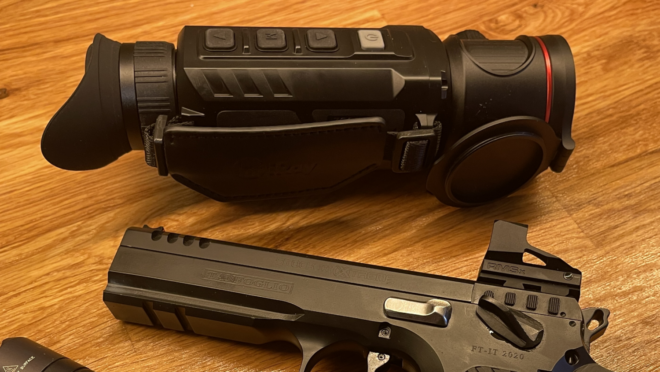This is a review of the Infiray Outdoor Zoom ZH50 V2 Thermal Monocular. It is a handheld, high-end device, with a powerful 640-pixel thermal sensor, and a unique dual FOV (Field Of View) functionality. The dual-lens system works either as 25mm or 50mm, with 2x or 4x base magnification respectively. In this review, you will find an introduction, a technical overview as well as a lot of images and a video to display what sort of performance you can expect.
Infiray Outdoor @ TFB:
- InfiRay Outdoor RS75 RICO HD 1280 Thermal Scope
- TFB Review: InfiRay Tube TH50 Thermal Imaging Riflescope
- TFB Review: Infiray FAST FAL19 – Red Dot Thermal Fusion Sight
- TFB Review: InfiRay Clip 1 and Jerry C Clip-On Thermal Imagers
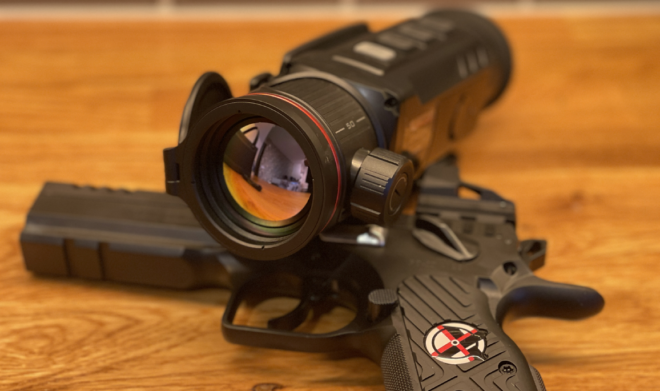
Apart from the Zoom ZH50 V2, we also have an upcoming review of the InfiRay Mate MAH50 clip-on thermal imager and their Tube/Bolt TL35 SE Thermal Riflescope. Exciting times ahead!
Introduction
The “V2” stands for the second generation, and comes with a number of improvements from Infiray’s first model. The biggest one is the introduction of an additional focusing knob, on top of the lens change ring. With it, the user can make focus adjustments after switching between lenses much faster and with ease. It’s actually quite sweet to focus with.
With the 25mm lens setting, you have 2x base magnification with a wide field of view. The 50mm lens provides a 4x base magnification, and you change between these two settings using the lens change ring/knob. You cannot stop in between these two settings, not with a clear image anyway.
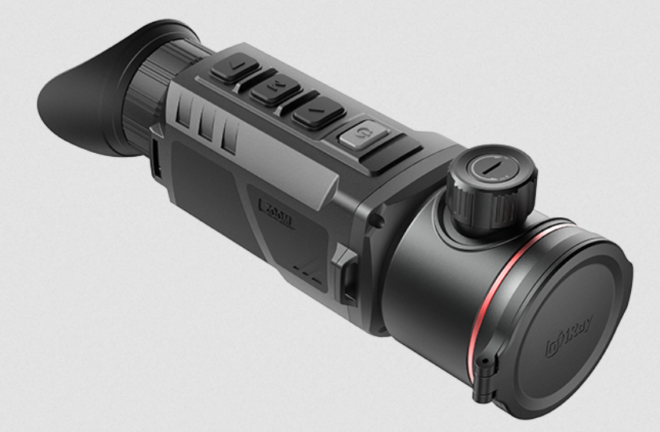
Since a monocular is a device that you carry a lot, getting it in and out of pockets, or a bag or other carrying system, the size and weight are important. In terms of size, the dimensions are 220×59×75 mm and the weight is 710 grams, about 1.56 pounds. The IP rating is IP67, to withstand dirt and water. As you can see in the images we used the Zoom in a little bit of rain, and there were no issues.
Below: It’s fun to have optics around when you get visitors. Moose calf in the garden. If it only could stay of some of the plants grown here, but I guess he thinks I’m the one who should be leaving?
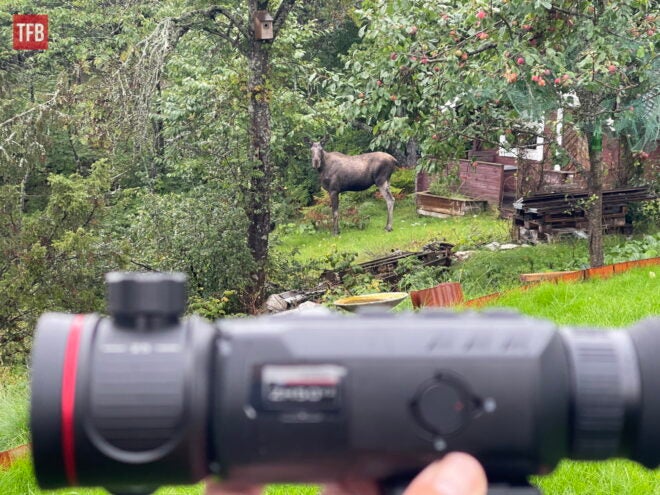
Below: Overview of the buttons on the top side.
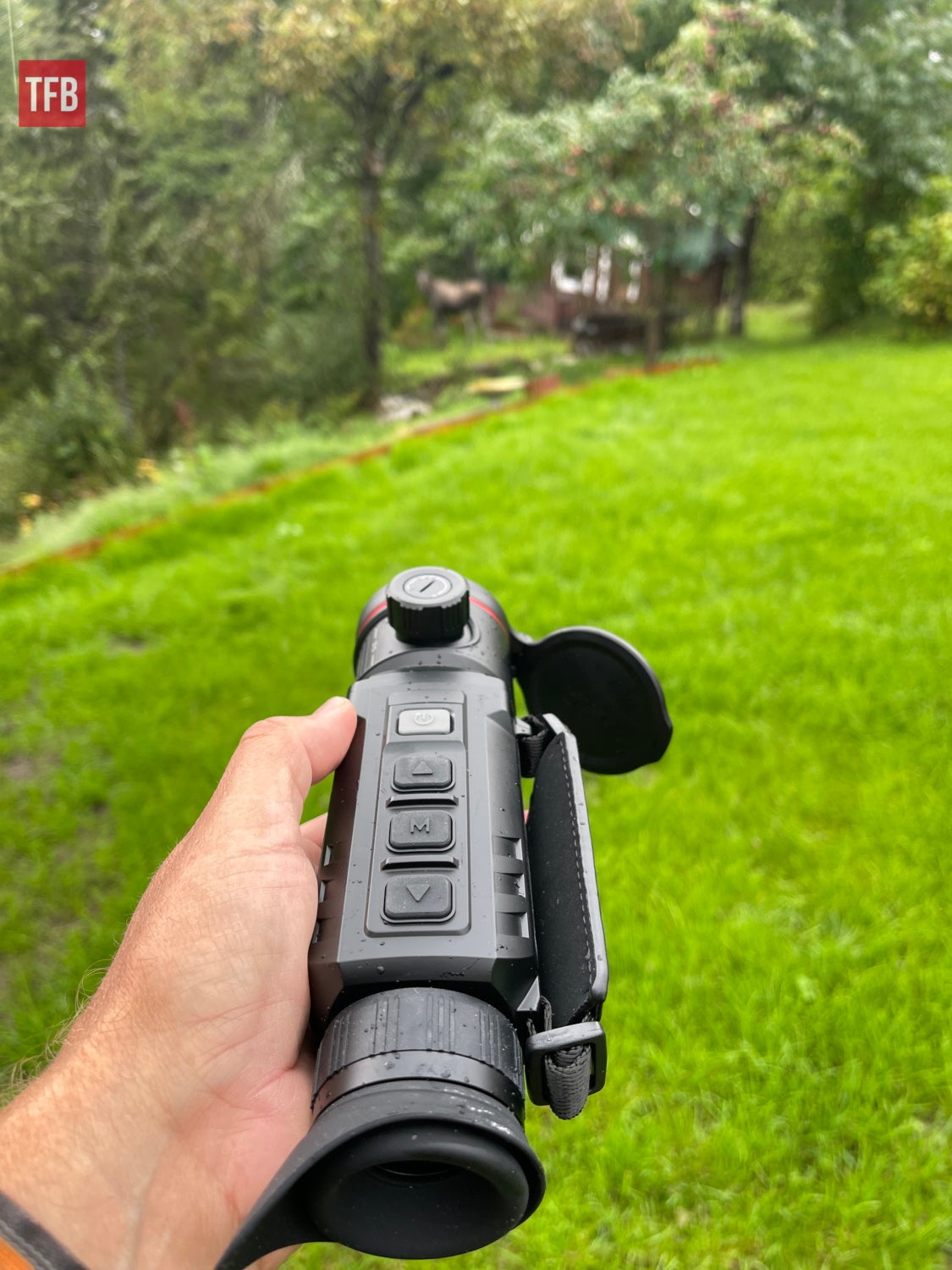
Technical Specifications
The new ZH50 V2 uses an uncooled vox 12um 640×512 high-resolution sensor, with a claimed NETD value of ≤25mK (the lower the more sensitive it is). The screen is a 1440×1080 FHD AMOLED display.
According to Infiray, the detection range of a 1.7-meter target (about the size of a human being) can reach up to 2600 meters, but this of course difficult to verify.
The unit has 32GB of memory for storing videos and pictures, and there are a lot of samples in this article. There’s also a WiFi connection to support apps and media transmission. I only used the USB C port to transfer media.
I tried using USB C chargers from Apple, but they did not work with the Zoom. I don’t know why, but it could be because the power is too high? Charging with the supplied cables from Infiray never caused any issues, but just beware if you’re out traveling to bring the right cables.
Batteries and Power
In terms of power, the Zoom ZH50 V2 comes with two standard battery packs, each offering around 10 hours of use. Below you can see the battery compartment, with its locking mechanism. It can be a little difficult to get the battery out, but it’s no big deal. I never had to change the battery, as I’m never out for that long period of time. There’s no internal battery.
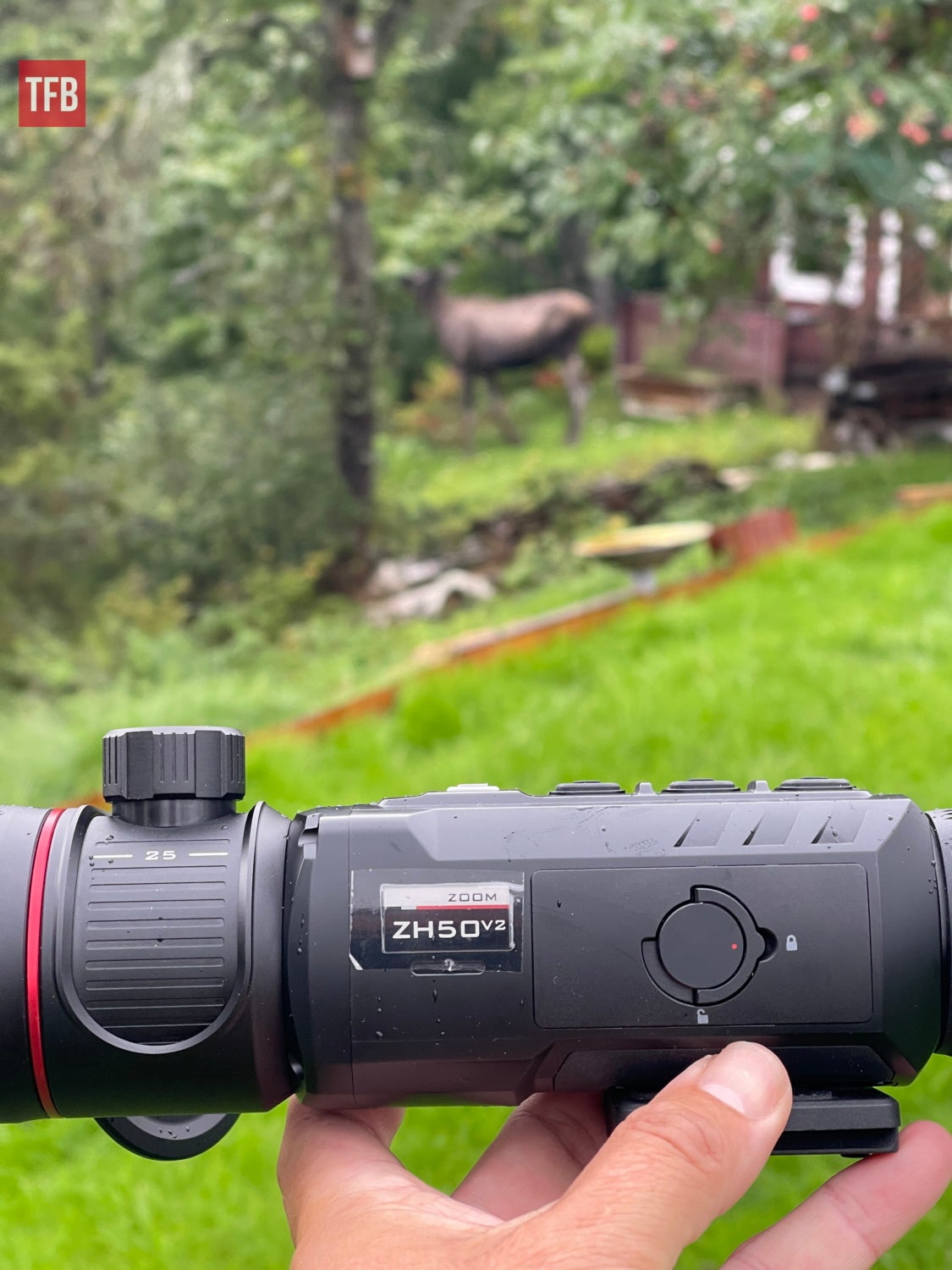
Below: Well, hello there. Why the shyness?
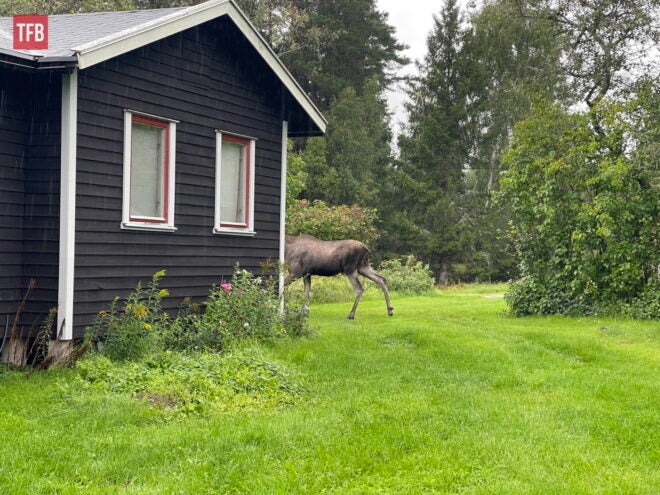
The Dual Field Of View
There are two ways to zoom in with a digital device. You either do it digitally, but you’re only zooming into the pixels and especially with thermal devices there are usually not that many to play with (640×512 in this case). Quite soon the object you’re looking at will look like large LEGO bricks. Or you can do it with optics, like the Zoom ZH50 V2, where you mechanically transition between two lenses that have their own base magnification.
In the video provided at the end of this review, you can see what it looks like when switching between the 25mm and 50mm settings. According to Infiray, there’s no need to adjust the focus knob (“one-time focus”) between the two settings. I don’t agree with that statement, I always had to adjust the focus to get a sharp image, but it’s not a big deal.
Infiray has a pretty good image of how the dual FOV works (below). Not the position of the knob, to change the FOV. With this knob, you can also adjust the focus. This is pretty neat, as you can keep your fingers on the same grip.


But I made my own of course. A moose from about 20 meters, using the 25mm and 50mm settings.
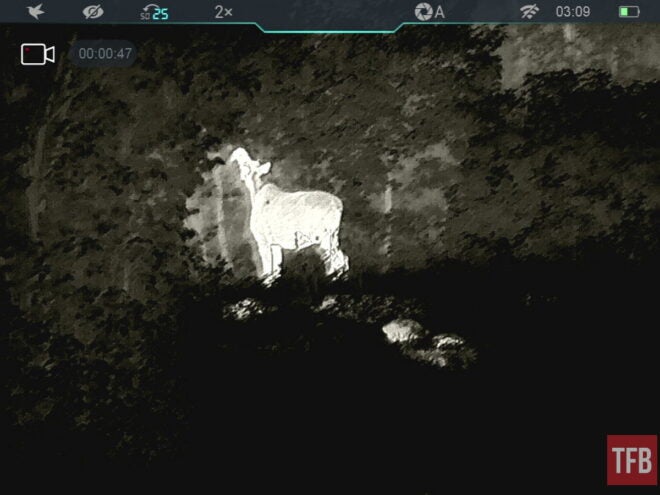
These images are taken when it’s pitch black outside, not at the same time as the other daylight ones.
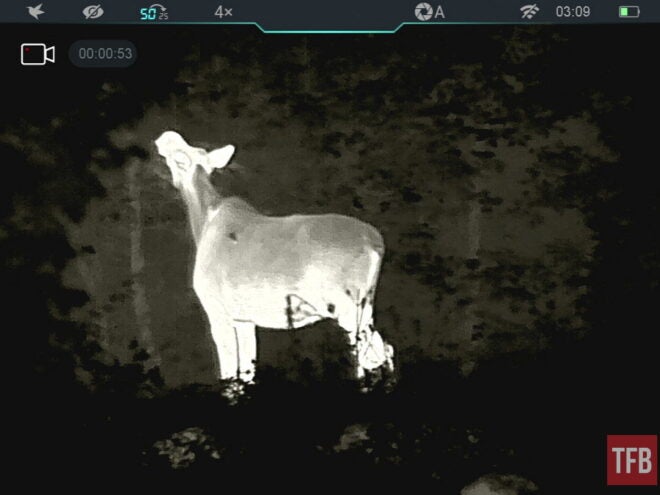
Here’s a deer taking a pee on a field. Distance about 60 meters.
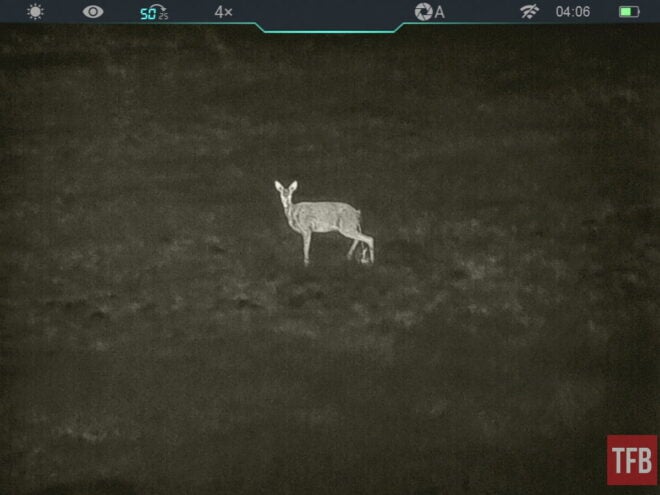
Image Quality
There’s a lot of “tech talk” when it comes to digital devices and thermals. The thermal sensor in this case is 640×512 with NETD ≤25mK. At the end of the day, most users/hunters don’t care about the numbers, they care about what it looks like in reality, and whether it works or not.
I would say that Infirays’ image algorithm is mainly geared towards offering the best image on the target (animals, in most cases). There’s good and bad with that. The good is obviously that you get a good image of the heat source (animal), and the bad is that the surroundings often disappear into darkness (black). If you need to check your backstop (always check your backstop!) before shooting, you may miss some details.
Unfortunately, the ocular has a bit of a glass bottom effect on the AMOLED screen. It’s not a big deal, but it’s there, and nothing you can see in these images as they’re directly from the source.
Infiray Outdoor Zoom ZH50 V2 – Sample Images
Here’s a hunting tower at around 250 meters, taken during the night. No animals in sight.
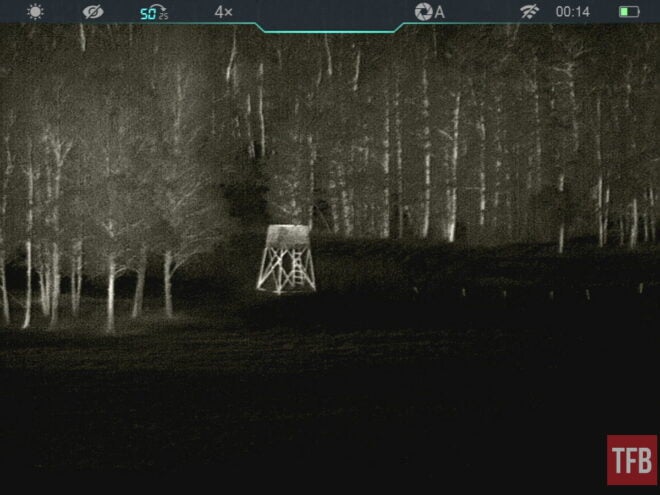
A deer lying down on a field, hiding between the trees. It may not be the sharpest or most interesting image, but it shows how much of a help a thermal monocular can be for a hunter. There’s no hiding.
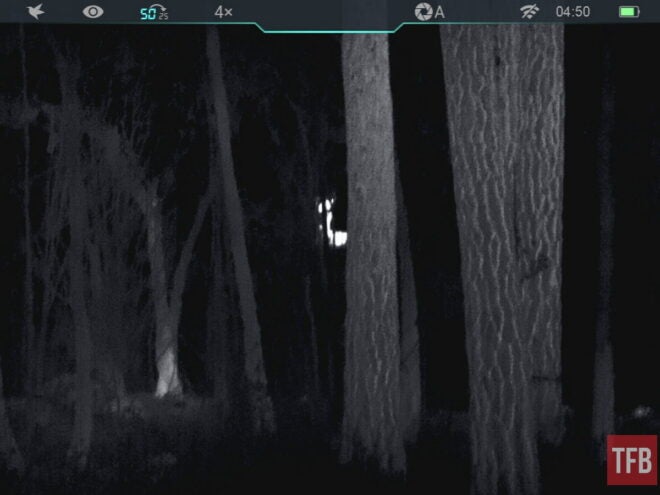
Using various settings. This one worked really well.
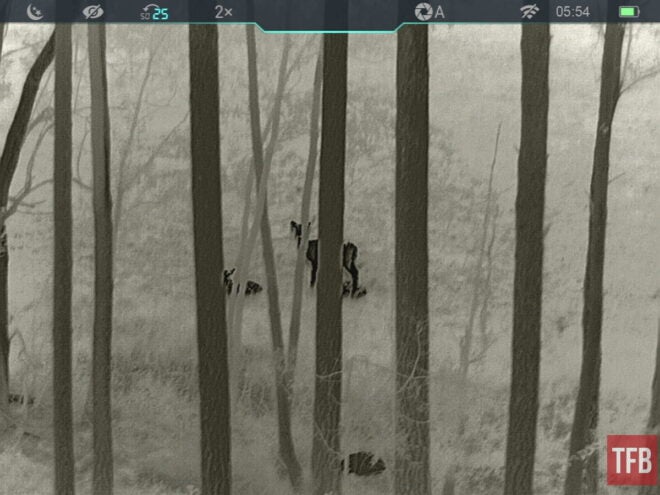
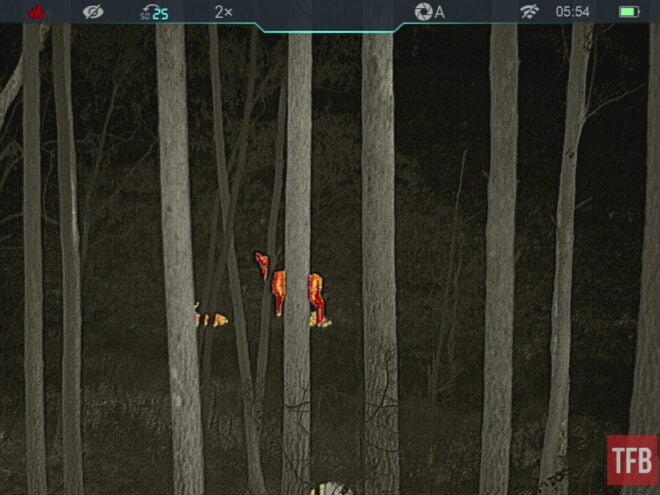
And with 50mm, 4x base magnification.
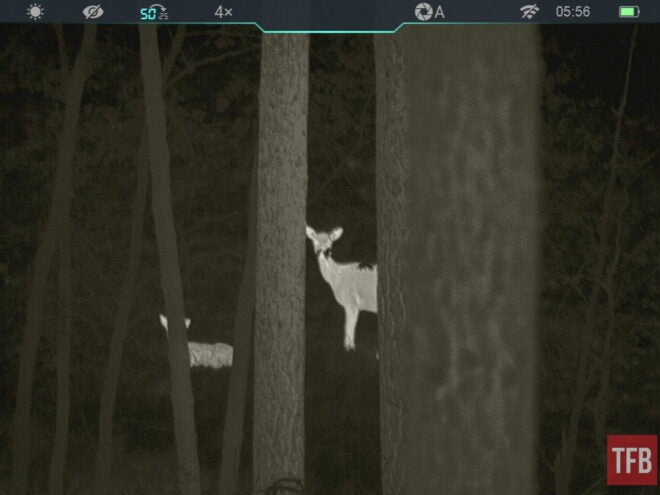
Some more examples, all taken during the day time.
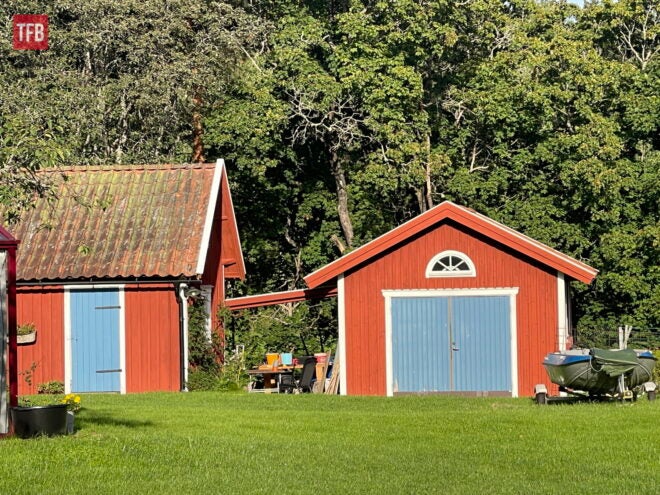
If you look at the furniture to the low right, it’s almost like the algorithms give the image a Photoshop effect.
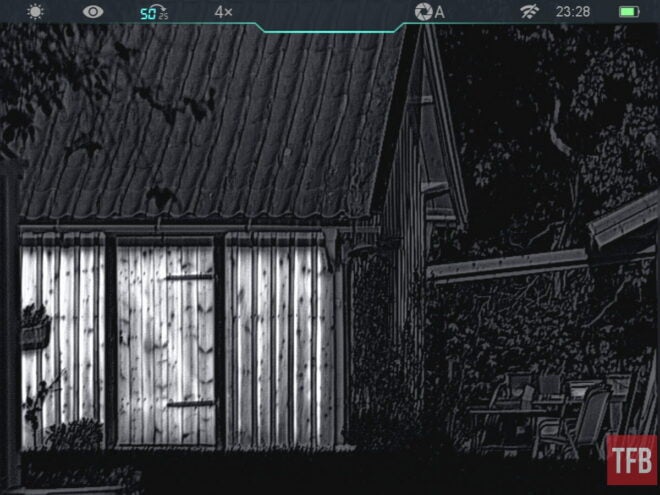
And when it rains, unfortunately, the image quality goes down. Less difference in heat to detect, which results in a lower image quality.
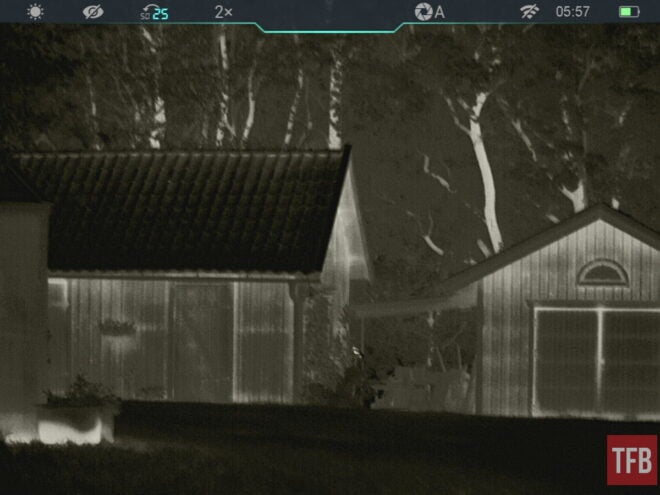
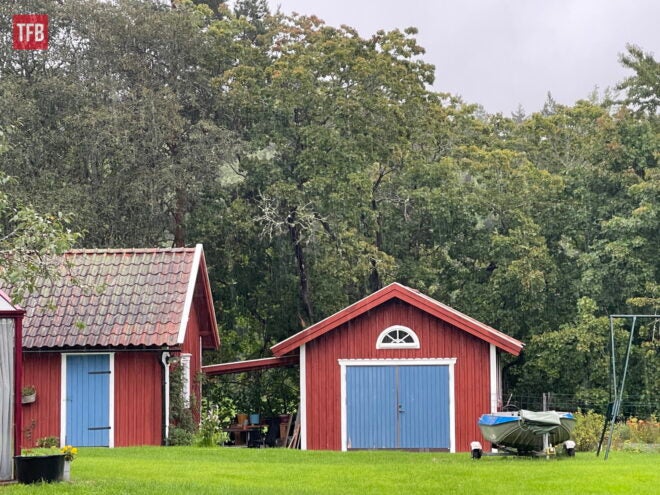
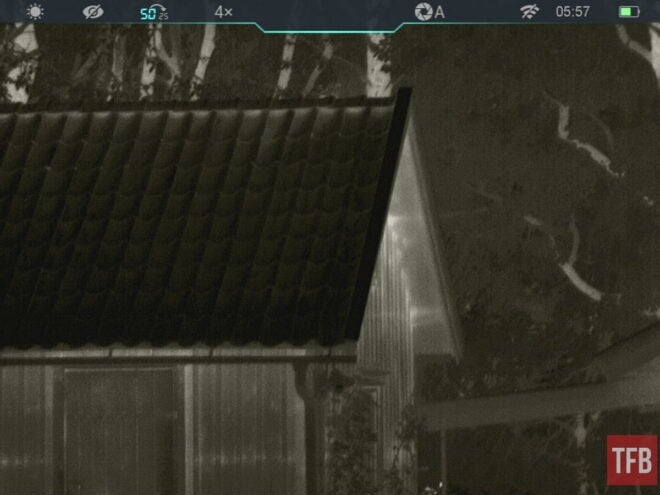
Below: Fallow deer at about 300 meters. There seems to be some latency in this image (the “shadows” in the animals) and it’s the reason why I chose to display it. Latency is no big deal in a monocular, it’s much worse in a thermal riflescope or clip-on, as you use them to fire at moving objects that may not be exactly where they appear.
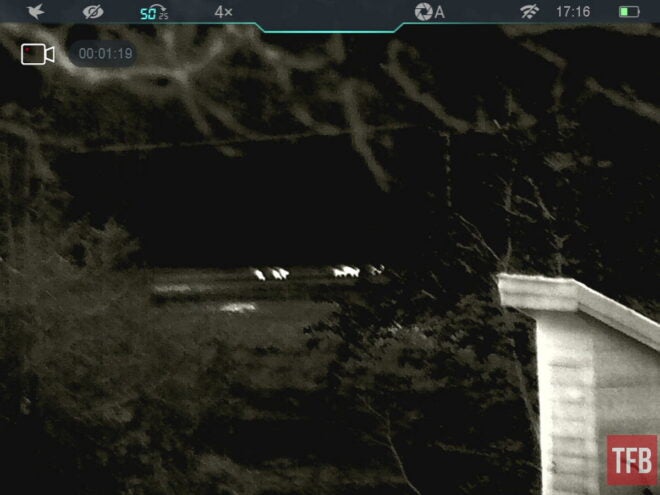
Below: At the shooting range, looking at an IPSC handgun stage from about 60 meters.
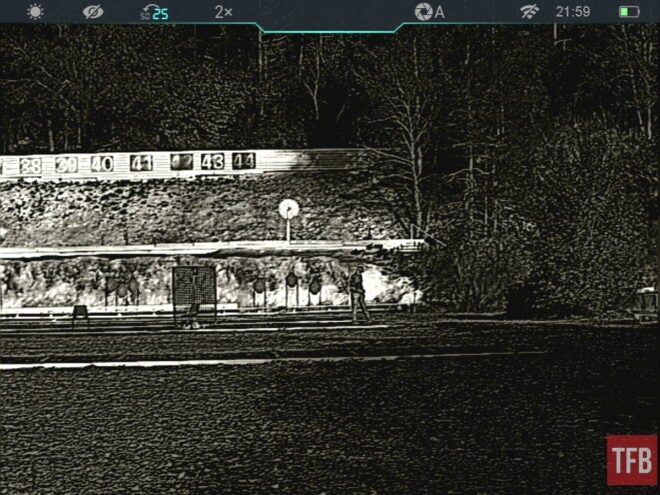
25mm vs 50 mm.
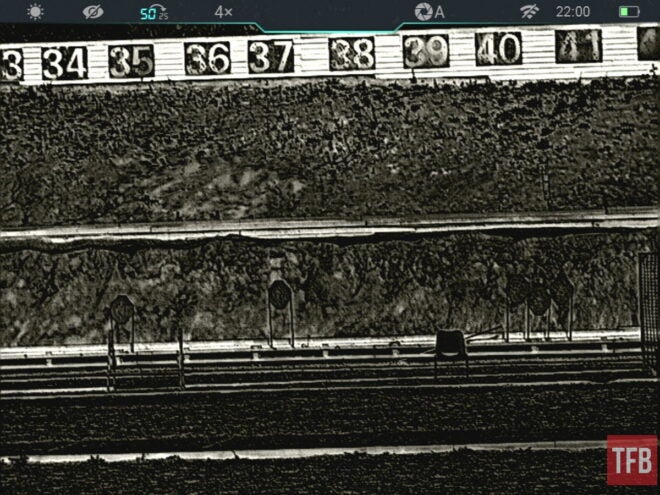
When the sun is out, you get some really nice quality out of the Zoom V2.
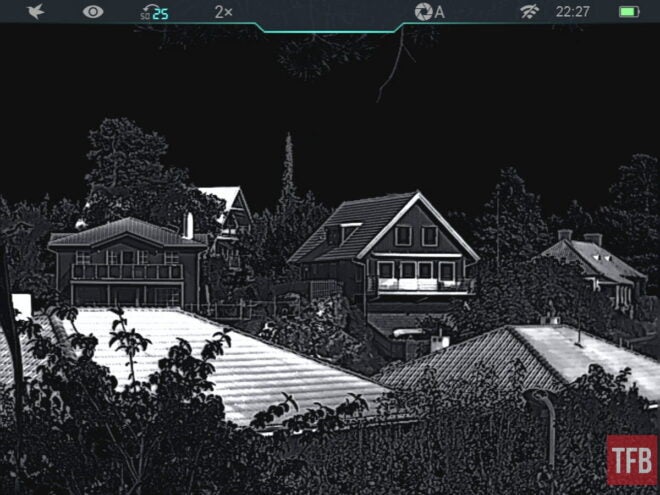
The distance is about 160-170 meters to the house. Excellent performance.
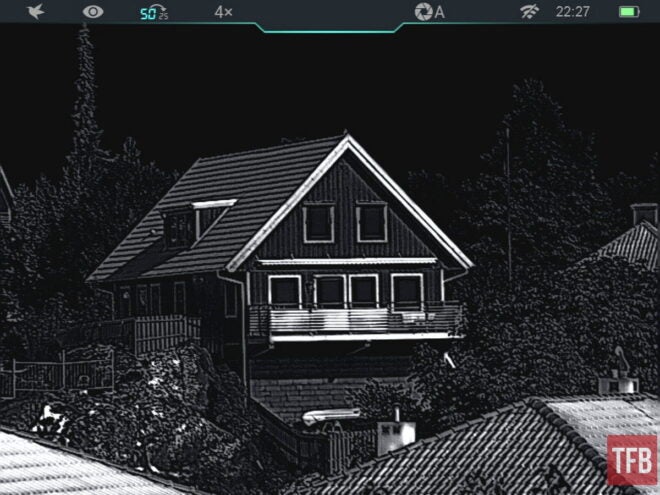
Thermals can be pretty dull when there are no warm objects in the field or forest. This view is part of my reference testing, which I try to do with all thermals.
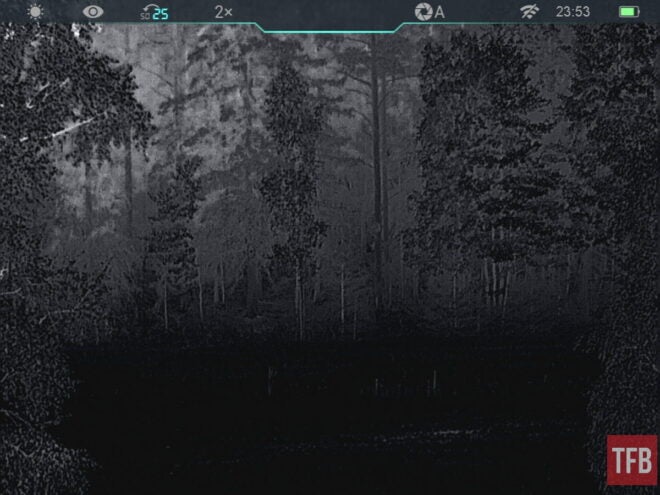
Below: Testing the different color modes. Fallow deer at about 300 meters.
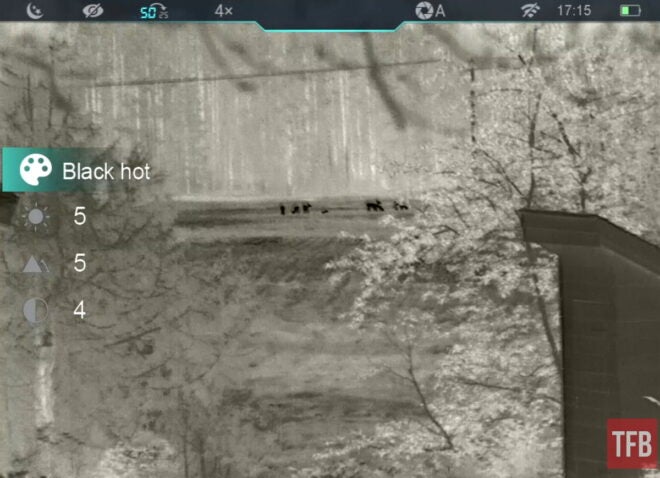
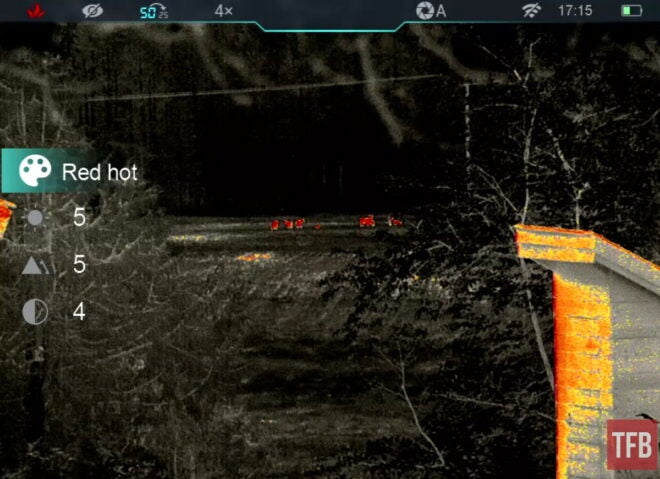
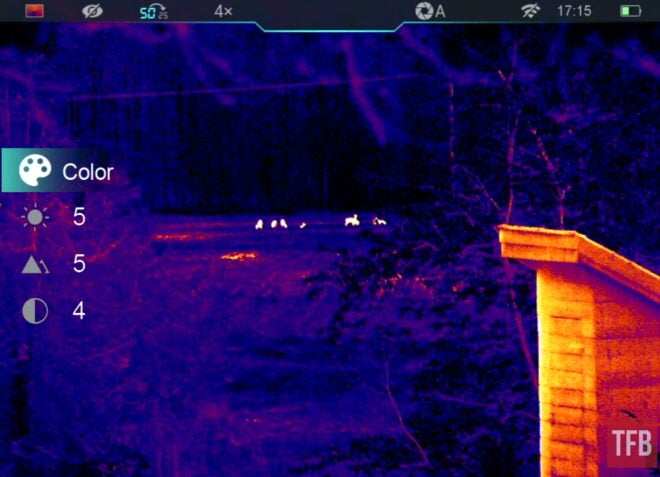
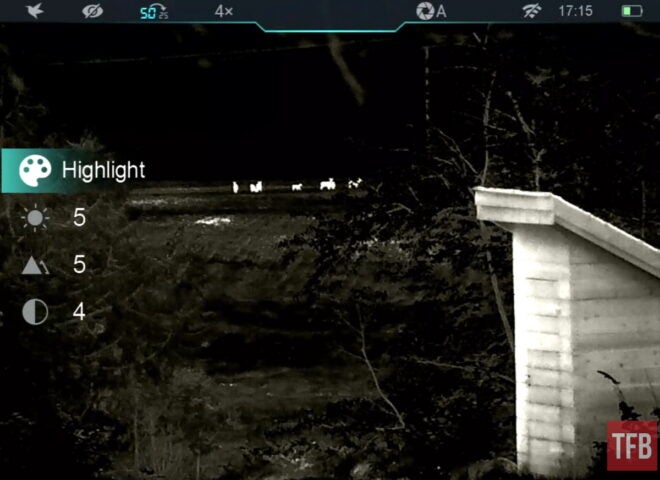
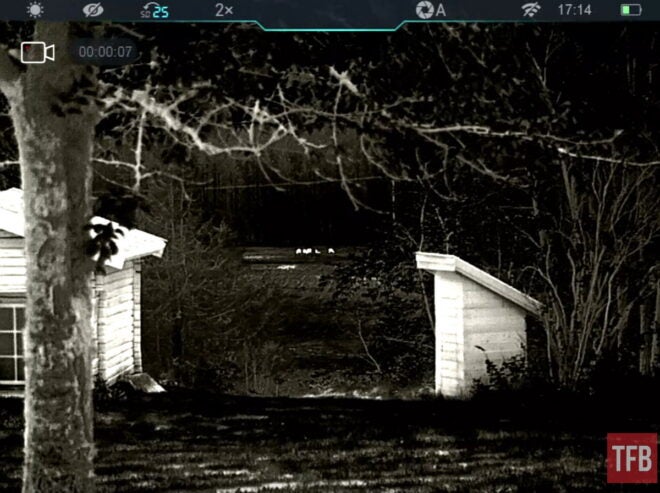
Deer with the 50mm lens. I think the distance is about 50 meters, but not sure. It looks like it’s walking on snow, but it’s a field with new-cut grass.
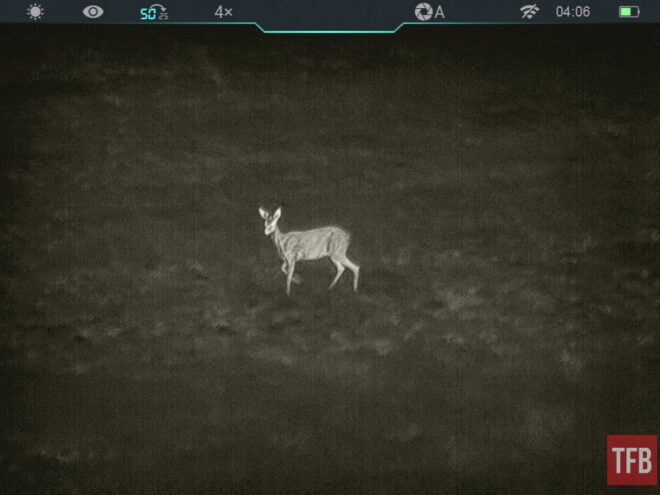
Hare at about 90 meters.
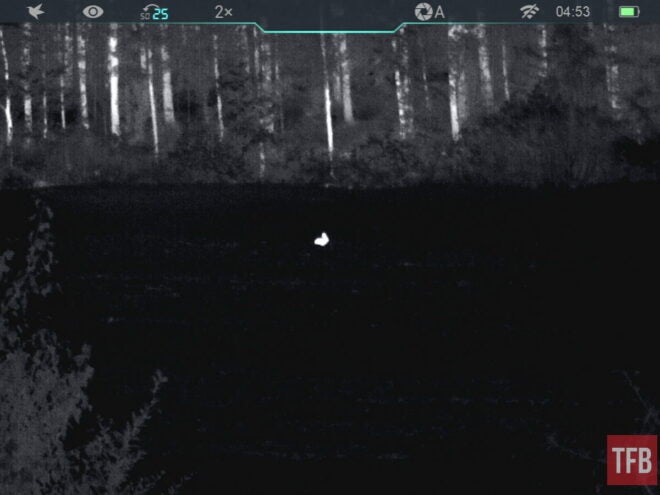
The Wildlife Park
I also spent half a day in a wildlife park, looking at various animals. While it may be difficult to get this close to some of these animals in the wild, it provides a great source of what they’ll look like on thermal. And I don’t have to sit for hours and hours with no animals showing up.
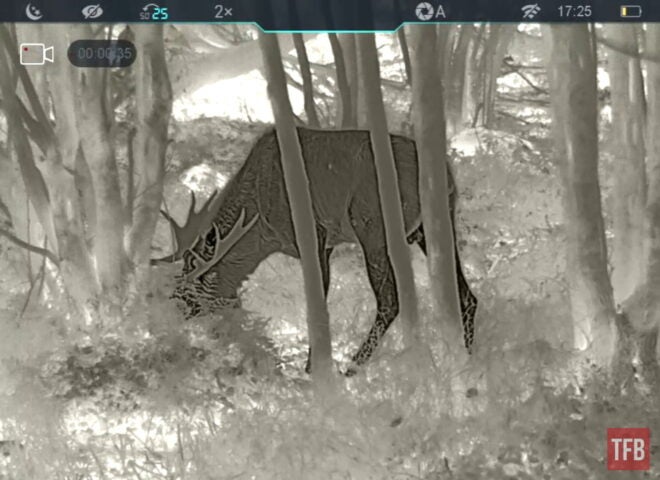
25mm vs 50mm
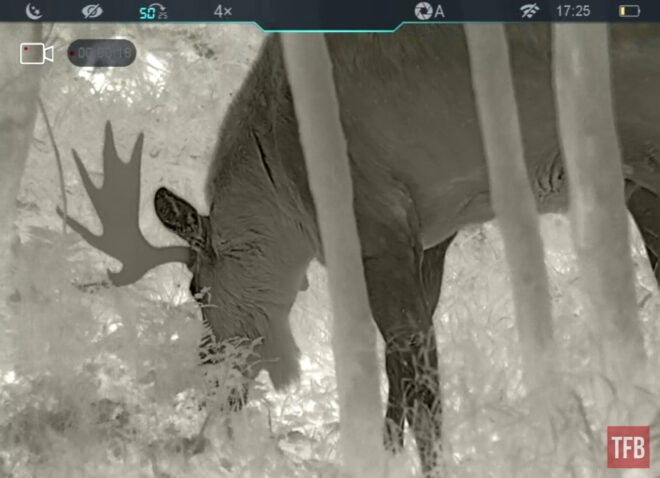
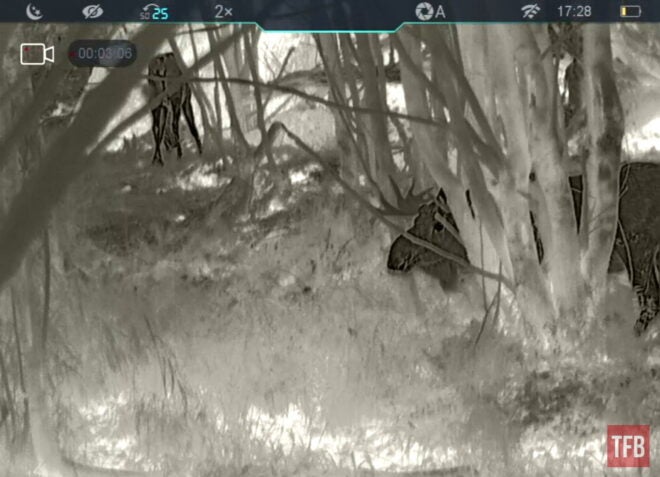
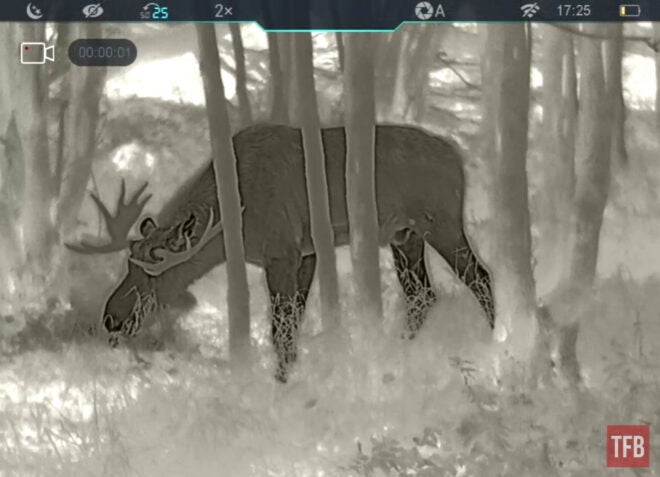
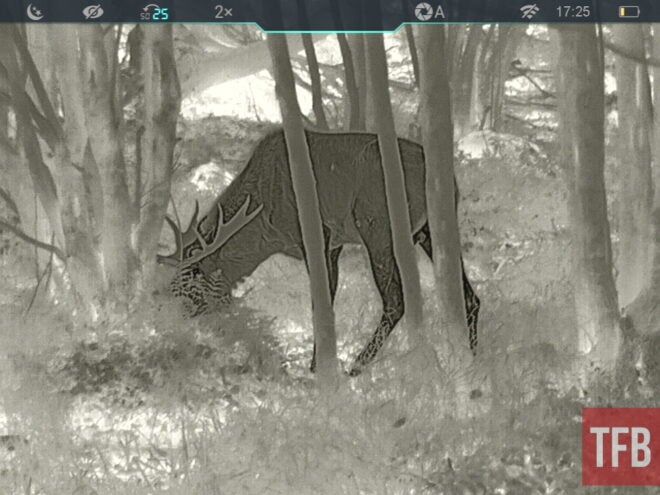
More deer.
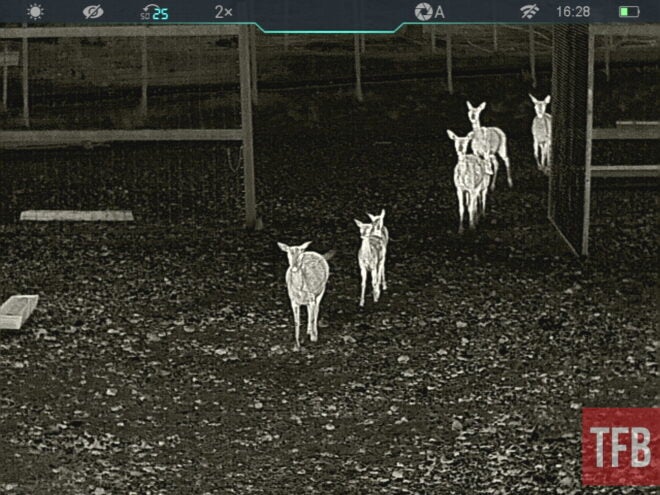
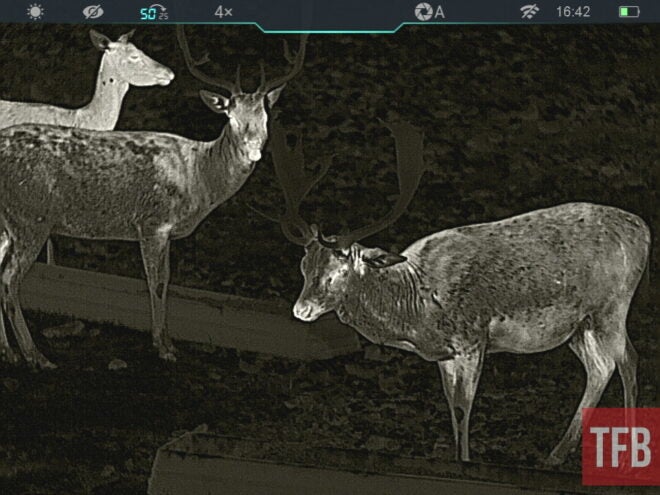
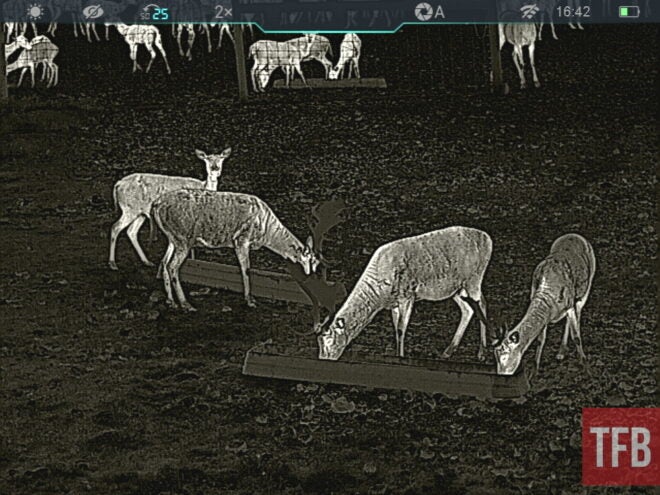
Very nice image of these shy deer.
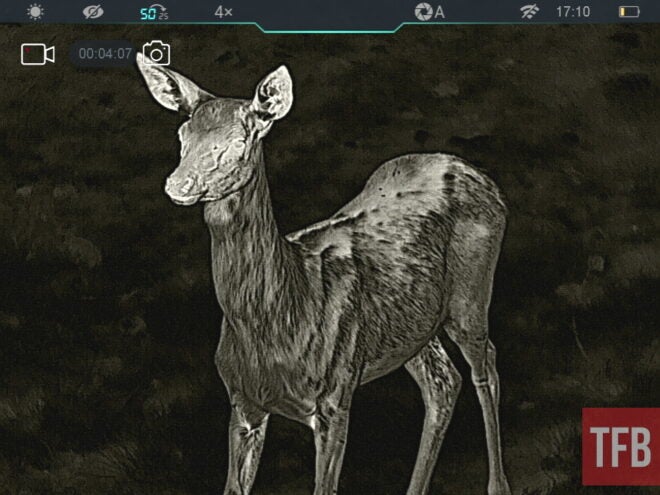
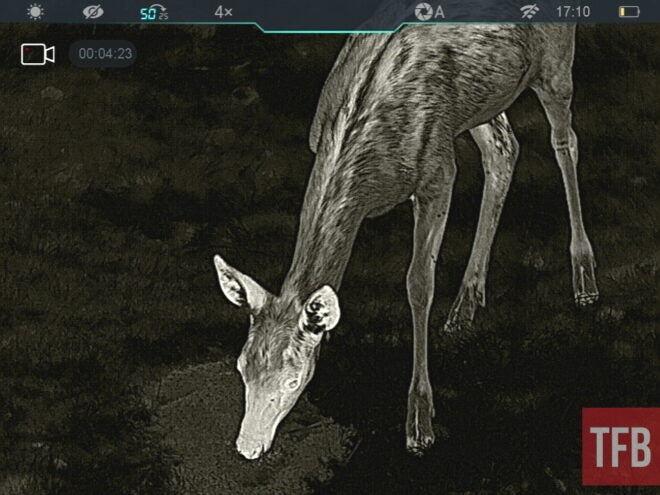
Below: We’re back in the wild again. It’s clear that this garden is only borrowed from the real inhabitants. As long as the ears are up like this, we’re all good.
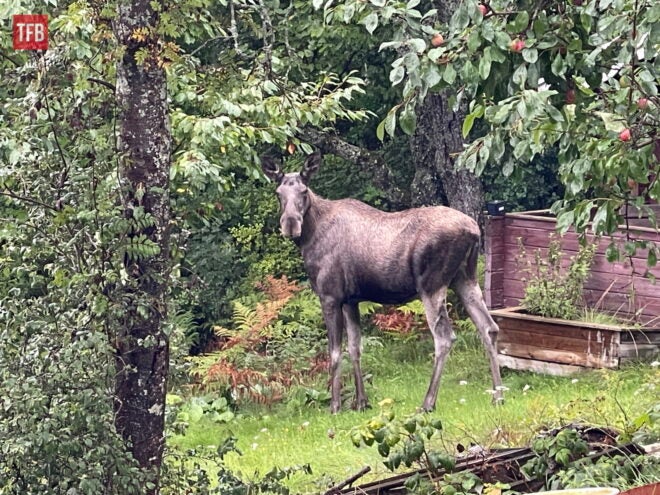
Probably one of the best ways to show the Dual FOV functionality is by looking at a shooting range and seeing how wide we can see. This is taken from 100 yards / 90 meters. Here the sun was shining from behind, and there was no apparent heat source, so we got a good image in the backstop as well.
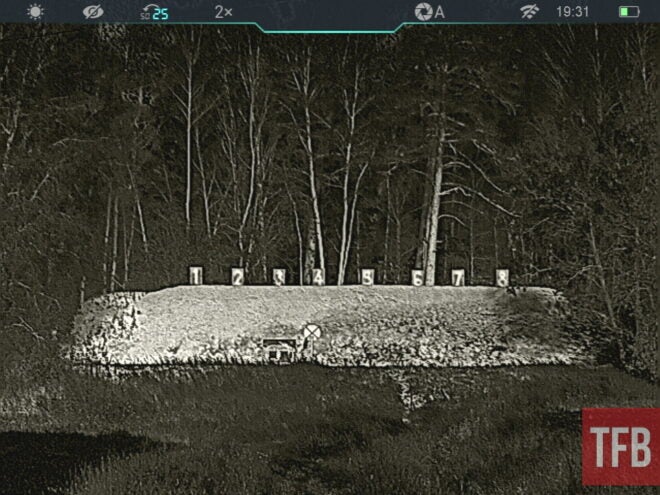
As a benchmark, with Infiray’s Tube/Bolt TL35 SE Thermal Riflescope, which uses a 384×288 (35mm) thermal sensor, it was hardly possible to make out the numbers in the picture below. You get what you pay for, and a powerful 640x sensor will deliver a much higher image quality.
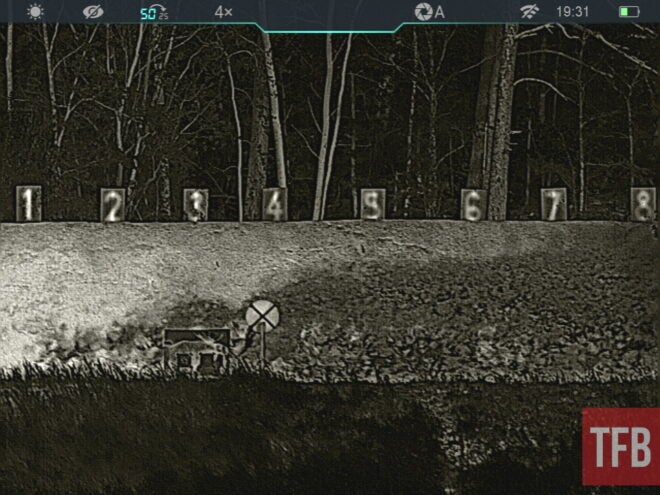
Video
As usual, here’s a video to demonstrate the Zoom V2’s capabilities:
Price and availability
The Zoom ZH50 V2 seems to cost around € 3300 in Europe, and it’s available.
Conclusion
I’ve been using the Infiray Outdoor Zoom ZH50 V2 for a few months, and it’s now going back to them. Apart from the battery charging not working with my Apple chargers, I had no issues at all. I used the original InfiRay Zoom ZH38 about two years ago, and the V2 is definitely an improvement in many areas.
It’s good that the battery is replaceable. Generally, I don’t recommend people buy units with internal batteries only, as it will be difficult or impossible to replace them in the future.
To be honest, I am not a huge fan of the Dual FOV functionality. While some love it, it may not be for everyone. I suspect that the feature pulls the price up by a fair amount versus all those fixed lenses. Then I look at the images above, and think perhaps it’s not such a bad idea after all? So I’m not going to put this feature up as a pro or con – I’ll let you, the reader and potential user, decide. If you want Dual FOV, this is the only device on the market (to my knowledge).
Pros
- Excellent image quality – especially when the sun’s out.
- The Zoom comes with two standard battery packs, more than enough power for most.
- The battery is replaceable.
- Easy to use.
Cons
- The buttons can be a little mushy – a better tactile feel had been appreciated.
- Poor weather will have a negative effect on the image quality.
- The price point for Dual FOV versus thermals with fixed lenses.
 Your Privacy Choices
Your Privacy Choices
